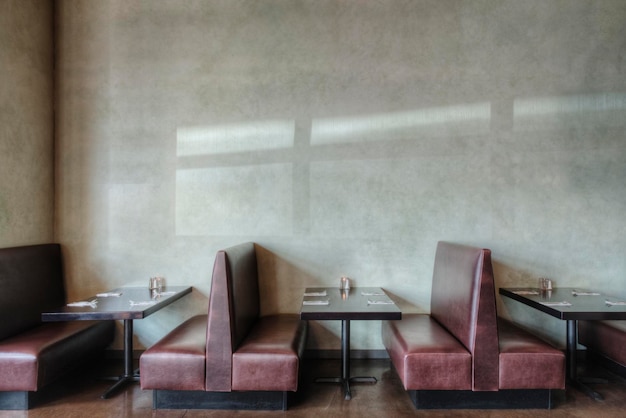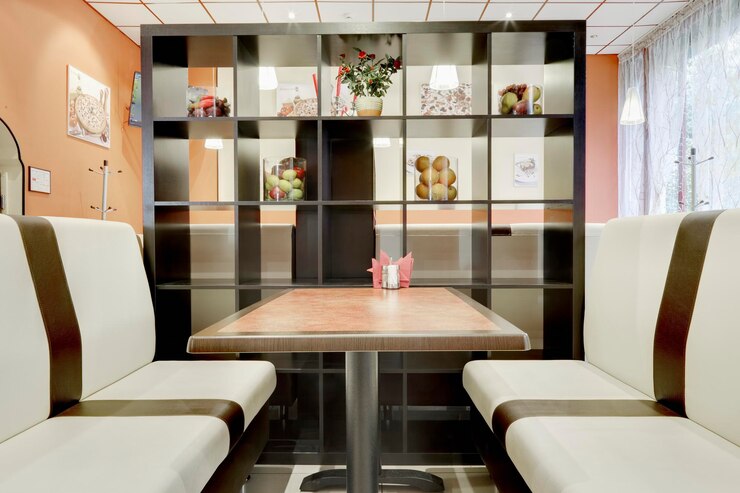The 1920s: The Modern Furniture Renaissance And The Birth Of The Restaurant Booths

It may be surprising to discover how ordinary things can ultimately disclose much about the world.
Very few of us know the history of the seating arrangements of restaurant booths, despite the fact that so many of us enjoy them! Have a brief look at this iconic American custom.
There’s a reasonable probability that you don’t give items like restaurant booths much thought. Since they are designed to do a particular task, the only thought that ever seems to enter anyone’s mind concerning them is whether or not they are functional.
Restaurant Booths
Restaurant booths typically perform well in dining environments.
They offer comfort and successfully foster a warm, homey atmosphere. You might not find the history of restaurant booths particularly fascinating, but as we have previously indicated, developing a little curiosity can make fairly ordinary things seem remarkable.
How Are Restaurant Booths Connected To The History Of The United States?
The history of restaurant booths and the United States is very closely related.
The culture formed in the US is very different from that of any other nation. This is partially due to the fact that so many individuals from diverse cultures immigrated to this nation and carried their culture with them.

This being said, the major cultural model America adopted, at least for the first century or so of its existence, was British.
1. Box seating arrangements
These traditions involve a seating arrangement known as “box seats,” which was first made famous in England. This arrangement is somewhat similar to booth seating, albeit the latter generally provides more comfort than the former.
Although the United States had shed its colonial status by the end of the 18th century, it was still a British culture. The English loved using box seating arrangements for seats in churches and opera theatres for families or private gatherings.
It was logical that this inclination would make its way into the new restaurants that were opening up. By 1796, the first record of an advertisement promoting the privacy of box seats surfaced from a location in Boston, Massachusetts, called “New Porter Cellar.”
2. The invention of restaurant booths
Since restaurant booths are most commonly associated with the early to mid-20th century, many people might be surprised to learn that booths were invented in the 18th century. While the 1920s to 1960s were undoubtedly when booths at restaurants and other such places were at their highest popularity, their roots are somewhat more intrinsic to the idea of eateries.
3. The origin of restaurants
For a long time, outdoor restaurants mostly sold food that people could take with them. From the middle ages arose the presence of taverns that provided a room and a meal, and here the first restaurants were created that allowed people to dine in.
After that, things quickly changed. In 18th-century France, the idea of a restaurant where patrons could sit down and enjoy their meal rather than having to take it to their homes became highly popular and eventually spread throughout the entire world.
4. Box seats with curtains
Customers still desired the privacy they experienced in the old bars in these new eateries. Due to this, box seating was developed, allowing patrons to sit across from one another in two rows of chairs. The installation of curtains followed this.
Customers could draw these curtains anytime they desired a little more privacy. These days, many people believe this concept is particularly brilliant because who wouldn’t want to eat in a private booth with a curtain drawn?
However, in the nineteenth century, especially in the somewhat puritanical United States, doubts arose about what people would do when the curtains were drawn. This led to a ban on the curtained box seating arrangements, and they began to prefer a more traditional table arrangement.
Dining on tables also gained popularity as America developed into a more opulent nation in the following half of the 19th century as a result of its more glitzy associations.
5. Restaurant booths re-emerge
Alcohol was made unlawful in the United States in the 1920s as a result of a growing puritan movement, which paradoxically is what made it possible for the restaurant booths to reappear. The subsequent generation discovered that they did not share their parents’ dislike of booths once prohibition was enacted, since the puritans of earlier generations had begun to ease into their lifestyles.
Restaurant booths were able to return in style thanks to this and the social events of the following decades. They played a significant role in eating out throughout the years when America established itself as a global motivating force.
Custom restaurant booths are still in demand in the twenty-first century, and restaurateurs and hospitality industry experts can still buy American-made furniture from us. We, Restaurant Furniture Plus, first opened our doors in 2012, and since then, we’ve worked hard to give consumers various booth options.
We’re just waiting for curtained box seating to become trendy again now that restaurant booths are in demand!
Additionals:










